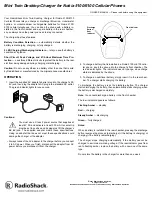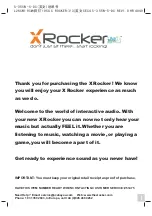
2
The charging voltage during buffer operation (emergency power) should be in the range from
2.25
to
2.30 [V / cell]
(
2,275
[V / cell]
recommended), that is from
13.50
to
13.80
[V] for the battery with a voltage of
12 [V]
(6 cells) and from
243.00
to
248.4 [V]
for 18 batteries connected in series (battery 220 V, 108 cells).
During cyclic operation (repeated charge / discharge cycles), when the battery is the primary power source, the charging
voltage should be in the range from
2.40
to
2.50 [V / cell]
that is from
14.40
to
15.00
[V] for the battery with a voltage of
12 [V] (6 cells). At high operating temperature fluctuations, a power supply fitted with voltage temperature compensation
system - reducing the charging voltage with increasing temperature- should be used.
Temperature compensation
coefficient is
minus 3 [mV / ° C / cell]
from 25 [° C].
The charging voltage should be well regulated and its ripple should not exceed 1.5 [%].
Each cell of maintenance-free battery (6 volt - 3 cell, 12 volt - 6 cells) is fitted with one way, self-sealing valve that opens
when the pressure increase inside the battery (e.g. overload) and releases gases to the outside, protecting the container
against explosion. Therefore, do not charge maintenance-free batteries in sealed enclosures; the battery space needs
efficient natural (gravity) ventilation.
b) Operating temperature:
The rated operating temperature of maintenance free batteries is
25 [° C].
Operation of maintenance free batteries at
elevated temperatures leads to a
significant
reduction in
battery life
. Battery life is reduced
by half
for each sustained
temperature rise of
8
[° C]
above nominal operating temperature. This means that the battery opera
ted at 33 [° C] will
retain 50 [%] while the battery operated at 41 [° C], only 25 [%] of the projected service life. For maximum battery life
(buffer operation) perform the following steps:
place the battery away from heat source devices (e.g. transformer, heat sink),
keep at least 1.5 cm of free space around the battery and use the devices fitted with ventilation holes in the
housing to allow free air circulation,
use effective natural or forced ventilation or air conditioning,
use a power supply with
temperature-compensated charging voltage
if the operating temperature exceed 25 [°
C].
Operation at high temperatures (above 40 [° C]) significantly reduces lifetime of batteries and may also lead to their
failure.
The temperature rise of batteries causes a reduction in internal resistance, resulting in an increase in charging
current. Higher current raises the temperature of the batteries so their resistance decreases. Then the cycle is repeated,
leading to the so-called
thermal runaway
, that is lack of thermal stability of the battery. When the battery temperature
exceeds 40 [
° C], the process occurs rapidly and leads to irreversible damage to the battery (C, in extreme cases -
deformation of the housing).
Please note: when the room air temperature is40 [° C], the temperature of battery located inside the UPS power
supply will be from a few to several [° C] higher depending on the operation mode of the battery (buffer charging or high
current discharge).
c) The depth of discharge:
Tightly sealed lead-acid batteries are sensitive to excessive (too deep) discharge. Excessive discharge of the battery
reduces its energy storage capabilities, capacity and lifetime. Leaving a discharged battery for a longer time without
recharging can also result in excessive discharge. Too deeply discharged batteries are damaged by sulphation which
results partial irreversible loss of capacity available. The minimum allowable discharge voltage of the battery depends on
the discharge current and is specified in the battery discharge characteristics.
4. Maintenance:
For maximum lifetime and reliability of maintenance free batteries connected in series or in parallel to increase their
voltage or capacity, periodic inspections of their status and operating parameters should be carried out. Periodic
maintenance of batteries should be performed only by qualified and authorized personnel. Presentation of
the results of
measurements from all of required periodic maintenances is a condition for warranty claim
.
Every
12 months
(every 6 months recommended) from the date of installation, check and
document
the following:
a) Battery charging voltage
- should be in the range between
2.25 and 2.30 [V / cell]
that is, for example:
243.0
to
248.4 [V]
for 18 batteries connected in series (220V battery, 108 cells). The recommended value is
245.7 [V] (2,275 [V /
cell])
. The charging rectifier should be equipped with a charging voltage temperature compensation system.
b) The charging voltage for each battery
- should be in the range between
13,5 and 13,8 [V]
,





















